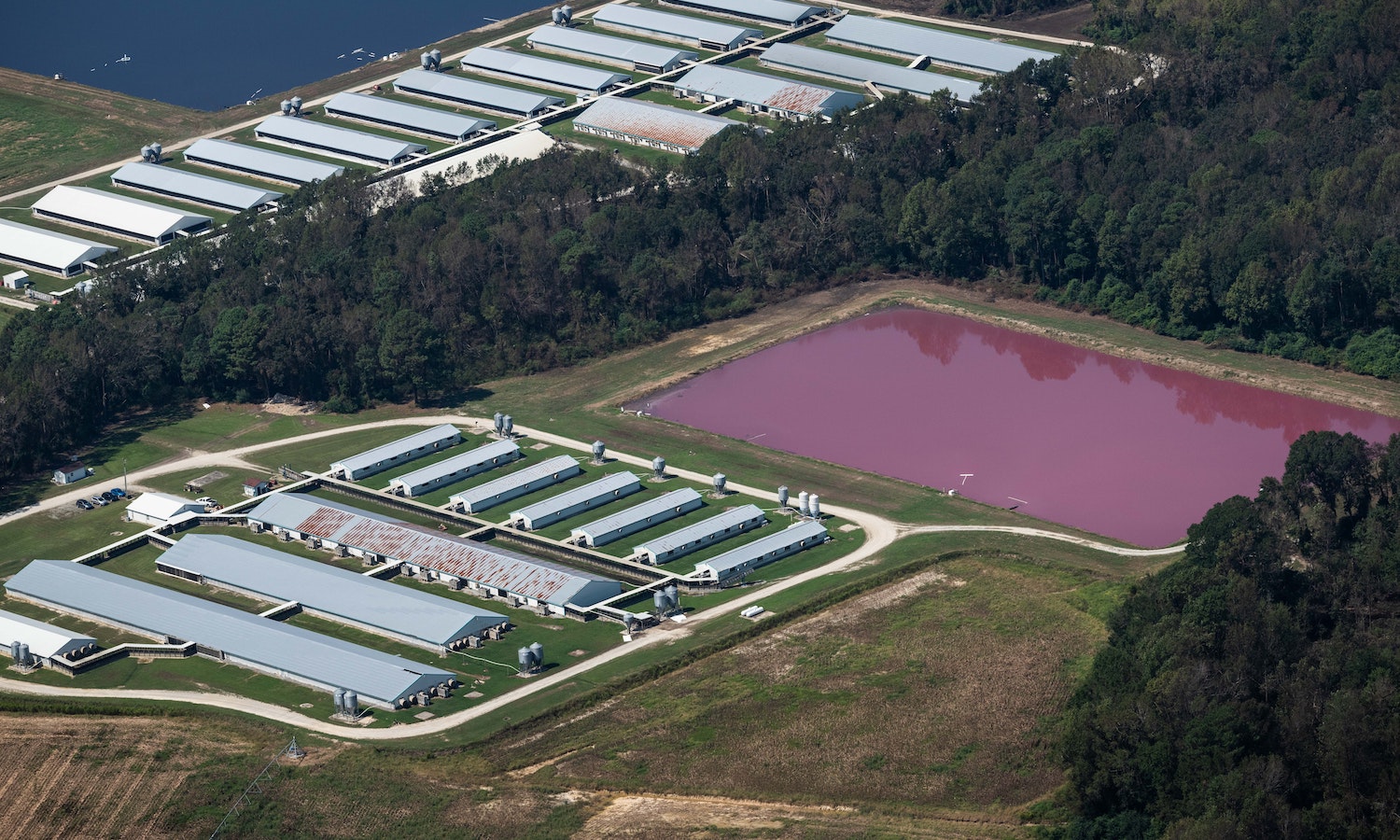In a recent webinar hosted by FoodPrint and the North Carolina Environmental Justice Network (NCEJN), environmental activists argued that biogas will exacerbate challenges caused by the industrialized pork industry in North Carolina.
The webinar featured Will Hendrick, Environmental Justice Advocate for the North Carolina Conservation Network (NCCN); Sherri White-Williamson, Environmental Justice Policy Director for NCCN; Sally Lee, Deputy Director of Rural Partnerships for the Food Integrity Campaign; and Naema Muhammad, Organizing Co-Director for the NCEJN.
Panelists walked viewers through the current waste management system on hog farms, proposals to bring biogas to North Carolina communities, and the threats that these both pose.
According to the U.S. Department of Agriculture, North Carolina is home to 9.4 million hogs that generate around 38 billion liters (10 billion gallons) of sludge and waste per year. Many of the state’s concentrated animal feeding operations (CAFOs) manage this waste by flushing it from barns into large ponds known as lagoons. Once the lagoons reach capacity, a sprinkler system sprays the waste onto surrounding crops as fertilizer.
But a study by the Environmental Working Group and Waterkeeper Alliance finds that this waste management system has a significant impact on the nearby residents. And it disproportionately impacts communities of color, who are more likely to live near a CAFO.
Once the waste is sprayed, Hendrick says, pollutants can contaminate surface water, groundwater, air, and soil, all of which have detrimental effects on communities’ health and quality of life.
“As agriculture has industrialized, some of its most polluting facilities have concentrated in communities of color and poor regions, since those communities are least empowered to speak up and fight back,” Jerusha Klemperer, Director of FoodPrint tells Food Tank.
This system also releases harmful greenhouse gases. According to a report from Duke University School of Law, hog CAFOs produce 40 percent of total methane emissions generated by the breakdown of animal manure.
In response to the environmental consequences associated with lagoons, some members of the U.S. Department of Agriculture and the U.S. Environmental Protection Agency, as well as local officials are promoting the use of biogas, which converts CAFO waste into energy. They argue that the use of biogas offers a clean solution and will reduce greenhouse gas emissions.
But many environmental activists say that biogas will bring further harm to local communities and only serves the financial interests of corporations that will profit off of the conversion.
White-Williamson and Muhammad explain that in order to convert methane into energy, the greenhouse gas must be transported from CAFOs to a facility that can process it. This requires low-pressure transmission lines that will run beneath nearby communities.
With little transparency around the process, local community members do not know whose properties will be impacted by the installation of pipelines. And White-Williamson says, the limited regulation around these lines puts residents at risk should an accident occur. “Community members would have no place to go to get relief from any injuries that may be caused.”
While proponents also say that biogas will contribute to economic development in the area through the creation of new jobs, White-Williamson argues that much of the work will be temporary. Once the processing facility and transmission lines are built, she explains, only two to three employees are required to operate the facility.
To prevent further damage to their communities, North Carolina residents are organizing to protect themselves and their neighbors.
The webinar comes shortly after FoodPrint’s release of two reports: one on the environmental impacts of the industrialized pork industry and another on grassroots organizing against the industry to fight for racial and environmental justice.
“[A]s long as there have been polluting industries sitting in minority regions, there have been communities fighting back,” Klemperer tells Food Tank. “Our report features some of those really wonderful and powerful grassroots organizations in North Carolina, Iowa and Missouri.”
FoodPrint’s supplemental report explains that in 2014, nearly 600 North Carolina residents brought 26 lawsuits against the pork company Smithfield. Residents allege that the company has the resources to better manage waste. Since then, plaintiffs have won five of the cases that have gone to trial so far.
Organizations like NCEJN and Rural Empowerment Association for Community Help (REACH) are also focusing on community outreach and civic engagement. They hope to educate more people about the pork industry and biogas and identify new leaders in the movement.
Muhammad also advises people who are not directly impacted by the issues to remain engaged. Plans to introduce biogas will not end with eastern North Carolina, and communities must begin organizing now.
“We want a clean environment for everyone in the state,” Muhammad says, “not just the ones who live in more urban areas.”













